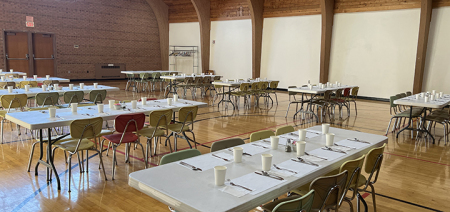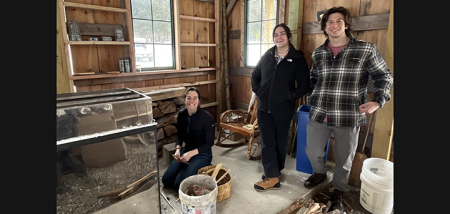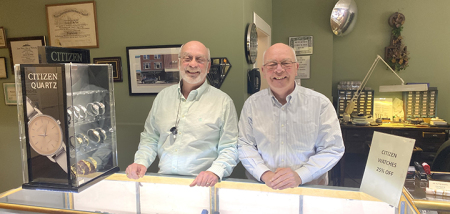The Emergency Medical Services (EMS) Challenges In Rural Upstate
Published:
October 21st, 2021

Since becoming mayor of New Berlin a few months ago, I’ve learned a lot about the challenges Upstate community leaders face as they struggle to provide quality emergency medical services at a reasonable cost. This is true whether the EMS (ambulance) staff is paid or made up of local volunteers. I offer a few of these lessons in hopes that together, we can act or encourage Albany to act, in a way that continues to ensure we can provide responsive, professional life-saving services to our residents.
Three red-flags: Three symptoms alerted me to the extent of this challenge:
First, many local communities no longer have their own ambulance service and many of the traditional “mutual aid” agreements between communities have been replaced by contractual agreements. Many local squads that had long been a source of pride have been forced to completely shut down. As a result of this disheartening “business decision,” squad members, many of whom have been long-standing community leaders, have seen an end of their honorable, and often multi-generational terms of service.
Second, many local “for profit” organizations have stopped providing full service support, choosing to focus exclusively on medical transport between health care facilities. Other “for profit” providers have simply left the area because they couldn’t cover their costs.
Third, county officials were already working the problem at their level. Smart, experienced experts in the field were busily trying to solve problems that were growing more serious every budget year. In New Berlin, the EMS squad provides either primary service or “mutual aid” to communities in both Chenango and Otsego Counties, We hope that these county-wide plans can expand into a harmonized multi-county regional strategy for service and reimbursement.
Where we are today: The majority of our issues relate to two elements: Reimbursement for services and staffing. The reimbursement challenge can be subdivided into two subcomponents; Refused Medical Assistance, known as RMA’s, and reduced state reimbursement rates.
Refused Medical Assistance (RMA): If, after receiving lifesaving services, basic medical assistance, or simply a medical stability check, a client is not transported to a medical facility, there is no reimbursement. EMS services are considered a transport service: Hence- No transport; no pay. Looking at the numbers so far this year, nearly three of every ten of New Berlin’s calls (153 of 547 total calls) have been RMA’s. While thankfully not every client requires follow-on, facility-based medical attention, an RMA call means that the squad and vehicle were committed with no reimbursement to the servicing municipality. It should also be noted that RMA numbers have grown dramatically over the last few years due to 1) clients’ reluctance about COVID exposure in medical facilities, and 2) increasing incidents of opioid-related incidents that are treated on-site through the administration of a drug called NARCAN. (It should be noted that NARCAN, while free to trained members of the public, is issued at a cost to municipal EMS services.)
Expenses and Reimbursement: Like any other business, EMS management must consider “overhead”. “Capital overhead” includes not only the ambulance and the often expensive on-board gear, but the physical facility and utilities needed to house that equipment. (For example, state regulations require that ambulances be stored in a heated facility.) Capital overhead also includes temporary housing quarters for squad members, security lockers, and a communication-intensive call center. There’s also “operational overhead” which includes, vehicle maintenance, fuel, specialty training and licensing for drivers and medical professionals, management of specialty drugs and controlled substances, insurance for squad members, and clerical expenses associated with the many state- and federally- mandated reporting and billing protocols.
Even without personnel costs, these overhead costs can mean the average rural EMS call costs well in excess of $700.00.
Obtaining appropriate reimbursement for these costs is not always easy. New York is one of a number of states that doesn’t consider EMS an “essential service”: Fire yes; EMS no. Therefore, no funding flows from the state to local municipalities to help them operate their service.
Further, for those clients who are covered all or partially by Medicare or Medicaid, reimbursement rates can be as little as pennies on the dollar. Planning figures show that reimbursement to the municipality starts at about 80-percent of the original charge and is negotiated down from there. This means that community EMS services are likely to lose money on nearly all Medicare- or Medicaid-reimbursed calls: And in rural Upstate, this is an increasing percentage of all calls.
Staffing: The second set of challenges is staffing related. Whether the service has a paid staff or operates with its amazing volunteers, the numbers are dwindling and the demographic profile of those squads is changing. The training mandated to maintain certification continues to climb and the demands on these part-time employees (paid or unpaid) can be very taxing. The changing workplace has made it harder for our local volunteer teams to respond. Squad members must often leave a primary job miles from the first-response facility to serve. A single call may run for several hours, making it a real challenge for volunteers with traditional job commitments. And as we all know accidents, fire-related medical emergencies, heart attacks, and drug overdoses don’t just happen between “normal business hours.” Many communities with paid services such as New Berlin run from 7:00 a.m. to 11:00 p.m. so late-night calls often fall on the shoulders of local volunteers. If the local municipality can’t “staff a crew,” the time associated with response by a full-time paid service, often from 20-30 miles away can climb dramatically. And now for a bit of harsh reality- with increased age, many of our most experienced and savvy responders find it harder to handle the physical rigors of service. Simply put, rural Upstate New York is in dire need of more, and frankly, somewhat younger trained EMS members.
Potential Steps Forward: I offer a few thoughts to get the conversation started and invite those with more experience to jump in.
1. Consider a hybrid billing structure that includes a flat, per-mile, or per hour charge for those calls that do not involve transport.
2. Encourage our legislators in Albany advocate for New York to consider EMS an essential service. And we’ve got to do more than just identify the problem: We must offer them some structured funding proposals from which to start. While this isn’t likely to reduce the overall tax burden, it would enable local municipalities to receive and manage appropriated funds in support of their local EMS requirements.
3. Encourage those same legislators to advocate for a thorough review of Medicare and Medicaid reimbursement formulas and processes.
4. Incentivize more young people to join the local programs. There are currently dozens of well-intended incentive programs being discussed by the legislature in Albany: Narrow that number down to the three or four that appear most promising and focus our advocacy efforts on them.
5. Explore intern-type programs for high-school students. Examine what age requirements could be waived. Explore parental waivers to age mandates- it works in the military. Collaborate with insurance carriers to develop plans that support incorporating more junior members. Explore a model like the Civil Air Patrol where young teens gain exposure to an exciting field and experience the reward of giving back to their community.
Today’s challenges are serious, but they are not insurmountable. They require a coherent plan, persistence, and most of all, collaboration at the local, regional and state levels. Quality Emergency Medical Service is one of the cornerstones to a healthy community- and for rural Upstate the siren is already sounding.
Mayor of New Berlin Peter Lennon
Comments







